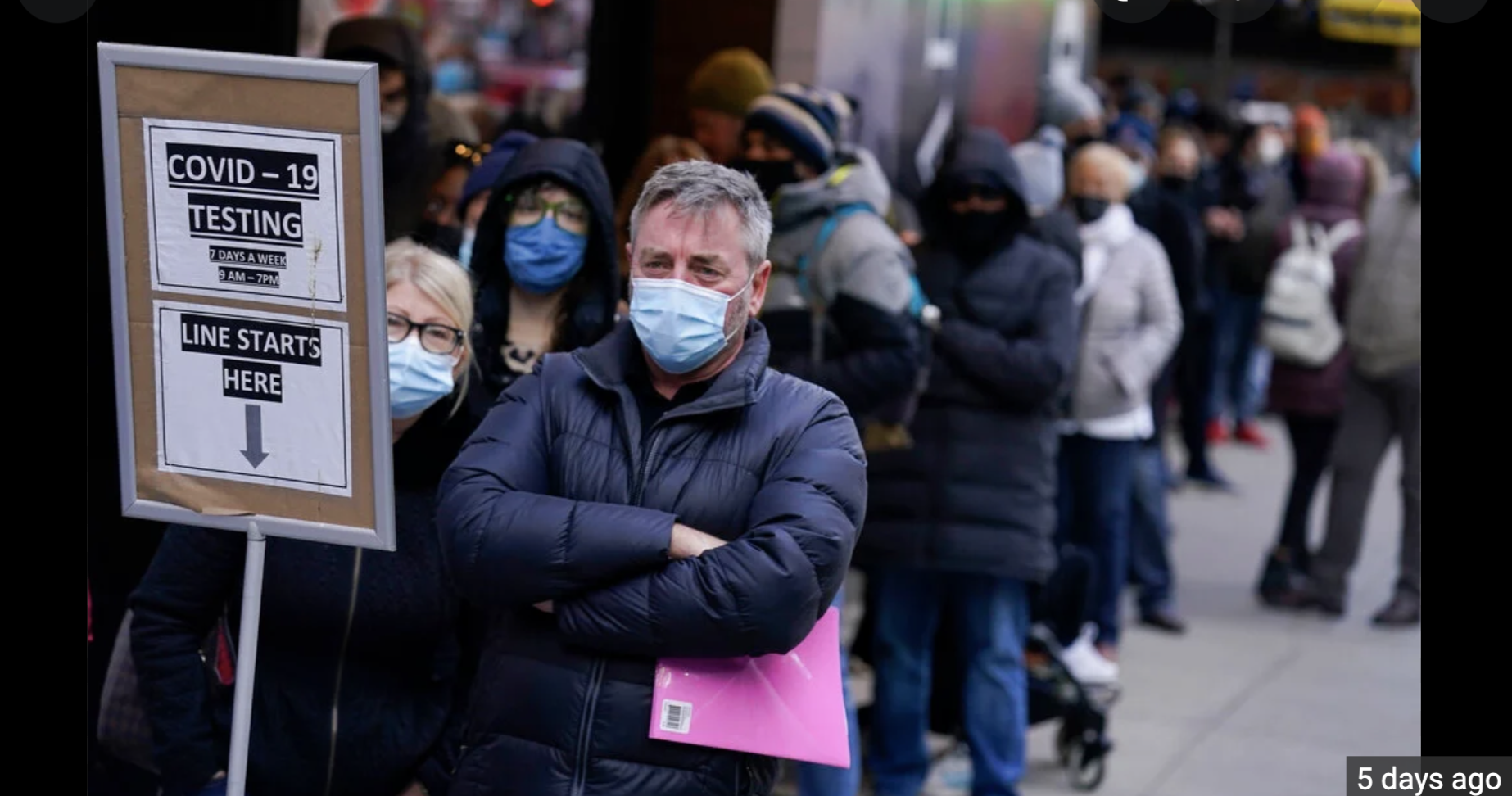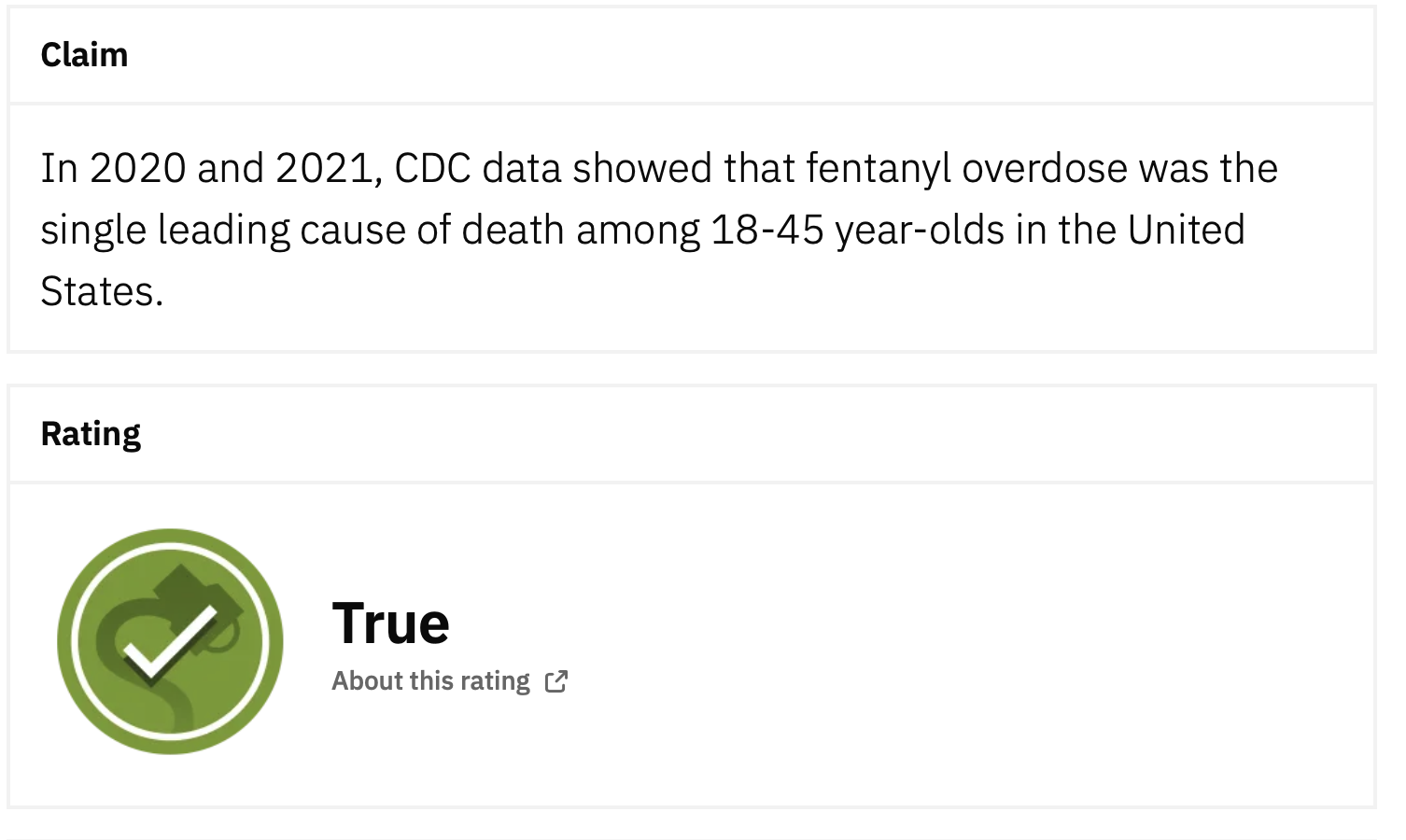(Deliberately created) Panic in Needle Park
/Yes, he could test negative now, and get infected on his walk back to his co-op, but he’s going to feel so much better! Briefly. Until he watches this evening’s news.
Omicron coverage reveals how the establishment, media keep us scared. I suggest you read the whole thing, but here are some excerpts:
In March 2020, a profile of the typical COVID victim emerged from Italy. The average decedent was 80 years old, with approximately three comorbidities, such as heart disease, obesity or diabetes. The young had little to worry about; the survival rate for the vast majority of the population was well over 99 percent.
That portrait never significantly changed. The early assessments of COVID out of Italy have remained valid through today. And so it will prove with the Omicron variant.
The data out of South Africa, after five weeks of Omicron spread, suggest that Omicron should be a cause for celebration, not fear. Its symptoms are mild to nonexistent in the majority of the infected, especially the vaccinated; hospitalization rates are over nine times lower than for previous COVID strains; deaths are negligible. That assessment will only be confirmed as the United States and other Western countries gather their own data on Omicron.
Yet the public health establishment and the media are working overtime to gin up Omicron hysteria. The official response to the Omicron variant provides a case study in the deliberate manufacture of fear. The following strategies are key:
1. Create a group norm of fear
The media want you to believe that everyone around you is scared out of his mind, and thus you should be, too. Man-on-the-street interviews quote Nervous Nellies exclusively. A Dec. 17 New York Times article headlined “As Virus Cases Surge, New Yorkers Feel a Familiar Anxiety” trotted out a parade of paralyzed city residents:
“Monday I wasn’t even thinking about [Omicron], and Thursday I’m in a panic,” said a 59-year-old woman on the Upper West Side. A teacher at Manhattan’s New School confessed: “It’s literally all I’ve been thinking about. I’m really heartsick and worried.” A 36-year-old woman in Fort Greene, Brooklyn, said: “It’s scary — it feels like we’ve been here before.” A 62-year- old woman in Queens reported that her travel and outing days were over: “I’m going to go home, I’m going to stay home and just keep to myself.”
2. Buttress group fear with expert opinion
The only public-health experts that the media quote are those determined to put the most dire spin on Omicron. They stress worst-case hypothetical scenarios and dismiss actual good-case evidence. At best, they may grudgingly admit that Omicron symptoms are disproportionately mild, but rush to assert that there are still many as-yet-unrealized grounds for worry. ….
3. Manufacture epistemological uncertainty and insist on that uncertainty as long as possible
The media intone repeatedly that much remains uncertain about Omicron, including how likely it is to cause severe disease. But we already have a good picture of that likelihood from the South Africa experience: very unlikely. Nevertheless, the director of the influential Institute for Health Metrics and Evaluation at the University of Washington, Christopher Murray, is determined to assert that we know little to nothing yet: “The most challenging question is severity,” he told the Times.
4. Bury both good news and dissenters from the bad news
5. Omit relevant context
We hear constantly that 1,300 people are dying a day from COVID. By comparison, about 2,000 people die each day from cancer and 1,600 from heart disease. Their deaths get no coverage. COVID was the leading cause of death in the United States only in January 2021, even among those 85 and older. Since then, it has ranked as the third-most-frequent cause of death both in the overall population and in the elderly.
Even those 1,300 daily COVID deaths are an overcount, since public-health reporting counts deaths with COVID as deaths from COVID. Someone who was dying already from cancer will be deemed a COVID death if he happens to contract that more newsworthy disease at the end of his life. Someone who dies of old age will also be counted as a COVID fatality if infected at death. ….
6. Flog the case count
… [T]he fear-mongering is paying big dividends. Like clockwork, events and businesses in New York City are shutting down, extending the demand for and dependency on government handouts.
…
Outdoor mask-wearing in Manhattan is back up to about 90 percent, based on informal observation. Masked residents of buildings where virtually everyone is vaccinated are refusing entry to the elevator to their fellow residents (also masked), as if a three-second ride to the lobby will provide enough viral dose to be infectious. Grown men are using their knuckles to press elevator buttons.
Perhaps the rest of the country, particularly in red states, will act more rationally toward Omicron. But here in the epicenter of blue-state dominance, we have turned the equivalent of the common cold into a potent weapon against the resumption of civil society.
And while we begin shutting down our country once again, our southern border has been thorn wide open to the importers of Chinese Fentanyl. How’s that working?
Fentanyl is now the leading cause of death for Americans between 18-45.
Newly released data shows that the leading killer of Americans aged 18 to 45 is fentanyl overdoses, with nearly 79,000 people in the age range dying of them between 2020 and 2021.
“Families Against Fentanyl,” an opioid awareness organization, analyzed the data from U.S. government sources and found 37,208 died in 2020 and 41,587 died in 2021. Comparatively, data says COVID-19 killed more than 53,000 in the demographic in the same time period.
Origin
In December 2021, news outlets reported an alarming new milestone in the continued growth of the opioid fentanyl as a considerable danger in American society. On Dec. 17, for example, Fox News published an article with the headline “Fentanyl overdoses become No. 1 cause of death among US adults, ages 18-45.”
Conclusion:
Over the previous two years, the U.S. did indeed see an alarming and rapid increase in the number and prevalence of fentanyl overdose deaths, and the claim that fentanyl poisoning was now the leading cause of death among 18-45 year-olds was indeed born out by official figures. We’re issuing a rating of “True.”
According to data collected by the U.S. Centers for Disease Control and Prevention (CDC), an estimated 64,268 fatal fentanyl overdoses took place in the U.S. between April 2020 and April 2021. That’s a 50% increase on the number of deaths between 2019 and 2020, and nearly double the 32,754 deaths from April 2018 to April 2019 — a remarkable rise in such a short period of time.
Details about the methodology and datasets behind the analysis can be found on the website of Families Against Fentanyl. The 10 leading causes of death for 2021, 2020 and 2019 are shown in the table below:




